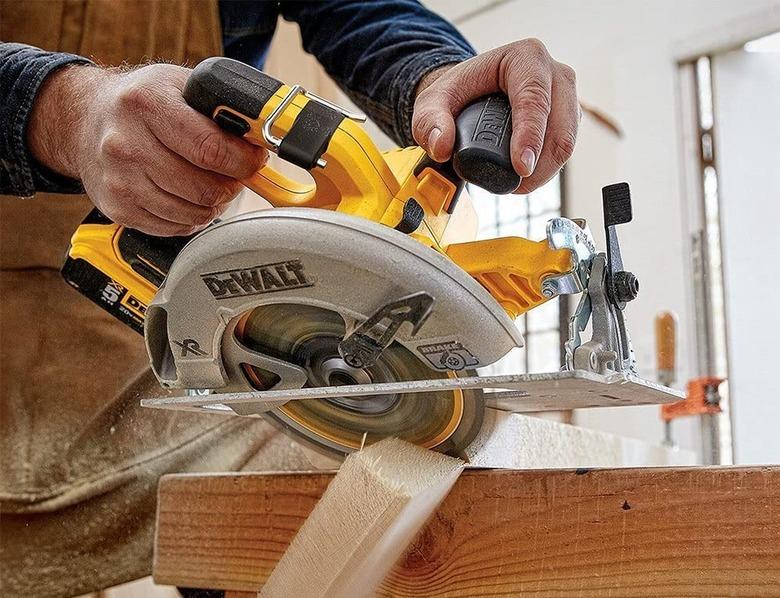How To Cut Molding With A Circular Saw
The trick to installing trim and molding with professional-quality results is having the right tools for the job — or maybe it's not. The real trick to making trim work look great is having a repeatable method of cutting angles with the tools you have available. For most situations, making accurate molding cuts requires a miter box saw. However, if you're trying to finish a small project or have just a few cuts to make, purchasing a miter saw isn't always necessary. Here are a few simple tricks you can use to cut molding with a circular saw.
Keep Safety in Mind
Cutting molding with a circular saw is potentially not as safe as using a miter saw to perform some of the same functions. Never use a circular saw without the blade guard attached and operable and don't hold the guard open with your hand or other means when cutting. For safety and the best results, firmly clamp each molding piece to a solid surface, such as a workbench, before making cuts.
Use a Speed Square
The easiest molding cut to make with a circular saw involves using a speed square. You can use this simple trick on trim pieces that lie flat, like picture frame molding or door casing, to make pairs of 45-degree cuts to form perfect corners.
- Mark the cut location on your trim piece to begin.
- Then, with the saw unplugged, measure the distance from the saw blade to the edge of the saw's shoe or base.
- Make an additional mark the same length as your measurement away from your original spot on your trim piece.
- Clamp your trim piece and firmly hold the speed square on the second mark with its 45-degree edge facing the cut.
- Guide the base of the saw against the square as you cut the molding.
The speed square method also creates perfect 90-degree crosscuts by simply turning the square in the appropriate direction on the molding.
Make a Bevel Crosscut
Cutting molding to install on an inside or outside corner is only slightly trickier when using a circular saw for the job. The bevel cut function on your saw can be a precision angle-cutting tool to make cuts in taller trim work, such as baseboard molding.
- First, determine the exact angle necessary for the cut and mark the spot on the molding. For accuracy, make an additional mark for your speed square.
- Clamp the piece to a solid surface.
- Set the saw's bevel to the angle you need.
- Firmly hold your speed square in its 90-degree configuration against the trim and line up your mark with the saw blade.
- Then, guide the saw along the edge of the square.
The bevel method allows you to make any angle cut up to 90 degrees. For cuts steeper than 90 degrees, use the inverse angle of the one you need and cut from the back of the molding.
Bevel a Long Edge
A circular saw can perform one trim cut that's out of reach for a miter saw. Typically, you'd make a long-edge bevel cut with a table saw. However, that's not always an option. You may need to make a long bevel cut when you're wrapping an outside corner with corner-guard molding.
- Set your circular saw to the bevel angle for half the total degrees necessary to complete the corner.
- Firmly clamp your workpiece and make a cut location mark at each of its ends.
- Draw a line from one spot to the other and follow the line with your saw to make the cut.
- Center a strip of painter's tape under your cut line to reduce chipping on fragile pieces.
